About Ecstasy Addiction
Learn More About Ecstasy Addiction
Ecstasy is an informal term that is commonly used when referring to the synthetic psychoactive drug MDMA (3,4-methylenedioxy-methamphetamine). Other names for ecstasy include E, X, XTC, and molly. Ecstasy triggers the release of serotonin, norepinephrine, and dopamine, and then delays the body’s ability to reabsorb these neurotransmitters. The result is that the user experiences increased energy, a sense of euphoria, and powerful feelings of empathy, emotional openness, and connectedness with others.
Ecstasy is one of several drugs that are collectively referred to as club drugs. Other substances that are often included in this category include GHB, ketamine, rohypnol, and LSD. Club drugs are so named because they are often taken at nightclubs, dance parties, raves, and other events or venues to enhance sensitivity to light and sound, lower inhibitions, and create a sensation of energized euphoria.
Ecstasy is illegal in the United States and its abuse can lead to a wide range of negative outcomes, both when taken alone or in combination with alcohol or other mind-altering substances. Individuals who have descended into chronic ecstasy abuse may experience physical, mental, emotional, and social problems. However, effective professional treatment can help people overcome the compulsion to abuse ecstasy and teach abusers of this drug how to make the necessary changes that will promote a healthier drug-free lifestyle.
Statistics
Ecstasy Addiction Statistics
Ecstasy is an extremely popular recreational substance, especially among young adults. According to the National Institute on Drug Abuse (NIDA), about 7 percent of Americans have taken ecstasy at least once in their lives. Ecstasy abuse is most prevalent among young adults, with 12.8 percent of individuals between the ages of 18 and 26 reporting that they have taken this drug at least once in their lives. In the 12-to-17 age group, the rate of lifetime ecstasy abuse is 1.5 percent; in the 26-and-above demographic, the rate rises to 6.4 percent.
The popularity of ecstasy abuse is also reflected in the number of emergency room visits by people who have taken this drug. According to the Substance Abuse and Mental Health Services Administration (SAMHSA), ecstasy-related emergency room visits increased by more than 240 percent in a recent five-year period. In 2005, SAMHSA documented 4,460 emergency room visits that involved ecstasy. In 2010, that number had increased to 11,316. About 36 percent of emergency room visits in both of these years involved people who had ingested both ecstasy and alcohol; the other 64 percent involved people who had taken ecstasy but had not been drinking at the same time.
Causes & Risks
Causes and Risk Factors for Ecstasy Addiction
The abuse of and dependence upon ecstasy can be influenced by several environmental and genetic factors. In some cases, one factor plays a dominant role in the development of a substance use disorder, but most often multiple potential factors can be identified. Decades of research into the nature of addiction indicates that the following are among the more common genetic and environmental precursors to drug abuse and chemical dependency:
Genetic: Family history plays a significant role in determining whether or not a person will develop a substance use disorder involving ecstasy or another drug. Parents who have problems with addiction put their children at an increased risk for experiencing similar problems. Some studies have suggested that the children of parents who have had substance abuse problems are as much as eight times more likely to struggle with addiction at some point in their lives than are the offspring of parents who have not abused substances. Studies involving twins who were raised separately and adopted children who were raised alongside their adoptive parents’ biological children indicate that genetics have a role to play in increasing a person’s risk for drug abuse and dependency.
Environmental: Substance abuse among parents, siblings, or other close family members can also be an environmental influence, as children who are raised in homes where the abuse of ecstasy or other drugs is common are likely to replicate this behavior. Given the social nature of ecstasy abuse, attending events where ecstasy abuse is prevalent can be a strong environmental influence, as can being pressured by one’s peers. People who have experienced chronic stress or trauma may also be at a greater risk for substance abuse as the use of drugs, such as ecstasy, could serve as an unhealthy means of self-medicating untreated psychological pain.
Risk Factors:
- Family history of mental illness
- Family history of substance abuse or addiction
- Personal history of prior substance abuse and/or mental illness
- Age (ecstasy abuse is most common among young adults ages 18 to 26)
- Socioeconomic status (most ecstasy users are from middle-class and upper-class families)
- Easy access to ecstasy
- Attending raves and all-night dance parties
Signs & Symptoms
Signs and Symptoms of Ecstasy Addiction
The following are among the more common signs that may indicate that a person has been abusing ecstasy:
Behavioral symptoms:
- Acting with high levels of energy
- Staying awake for long periods of time
- Developing irregular sleeping patterns
- Sharing intimacies with multiple partners
Physical symptoms:
- Dehydration
- Heightened sexual arousal
- Elevated body temperature
- Nausea
- Blurred vision
- Pupil dilation
- Clenching teeth
- Chills
- Increased heart rate
- Increased blood pressure
- Weight loss
Cognitive symptoms:
- Euphoria
- Increased sensitivity to light and sound
- Confusion and disorientation
- Anxiety
- Memory problems
- Vertigo
Psychosocial symptoms:
- Experiencing heightened pleasure from touch
- Enhanced sense of self-confidence and self-worth
- Becoming abnormally friendly
- Feeling profoundly empathic or loving toward others
- Loss of inhibition
Effects
Effects of Ecstasy Addiction
Though ecstasy is often associated with empathy, pleasure, and euphoria, the abuse of this drug is far from a risk-free experience. Both one-time use and chronic abuse of ecstasy can lead to a myriad problems in several areas of a person’s life. The following are among the common effects of ecstasy abuse:
- Anhedonia
- Diminished cognition
- Memory problems
- Depression
- Fatigue
- Cardiac arrhythmia
- Heart failure
- Kidney failure
- Hypertension
- Erectile dysfunction
- Legal problems
- Problems maintaining healthy interpersonal relationships
- Diminished performance at work
- Elevated risk for contracting sexually transmitted infections
- Academic failure
- Paranoia
- Damage to teeth from grinding and clenching
Co-Occurring Disorders
Ecstasy Abuse & Co-Occurring Disorders
Adolescents and adults who abuse ecstasy may also be experiencing one or more co-occurring mental health conditions. The following are among the more common disorders that have been diagnosed in individuals who were engaging in ecstasy abuse:
- Anxiety disorders
- Posttraumatic stress disorder (PTSD)
- Attention-deficit/hyperactivity disorder (ADHD)
- Bipolar disorder
- Major depressive disorder
- Persistent depressive disorder
- Other substance use disorders
Withdrawal
Effects of Ecstasy Withdrawal & Overdose
Effects of ecstasy withdrawal: If a person has been abusing ecstasy for an extended period of time, abruptly stopping or significantly reducing the use of this drug may be accompanied by a number of unpleasant symptoms. The following are among common ecstasy withdrawal symptoms:
- Cravings for ecstasy
- Insomnia
- Agitation and irritability
- Depersonalization
- Delusions
- Psychosis
- Muscle stiffness and atrophy
- Headaches
- Nausea
- Chills
Effects of ecstasy overdose: Individuals who abuse ecstasy put themselves at risk for overdose. When a person has taken a greater amount of this drug than his or her body can safely process, a range of negative outcomes may occur. If a person has also consumed alcohol or ingested one or more other drugs, the risk of overdose may be heightened and the symptoms may be more severe. Individuals who experience following symptoms may be in need of immediate medical attention, as these symptoms suggest a person is overdosing on ecstasy:
- Convulsions
- Hallucinations
- Muscle rigidity
- Extreme increase in body temperatures
- Acute respiratory distress
- Psychosis
- Renal failure
- Retrograde amnesia
- Loss of consciousness
- Coma
















